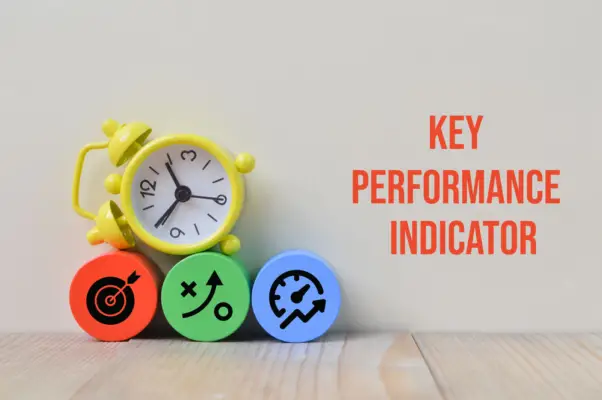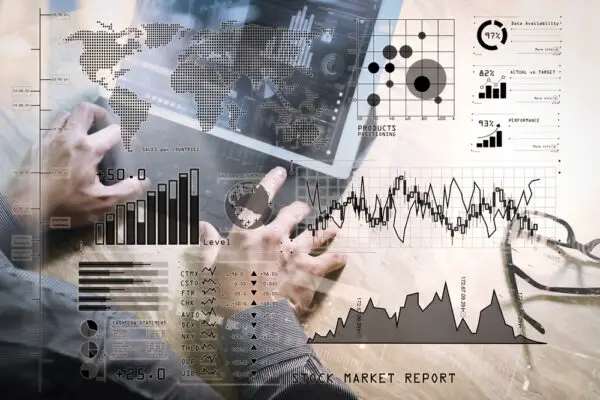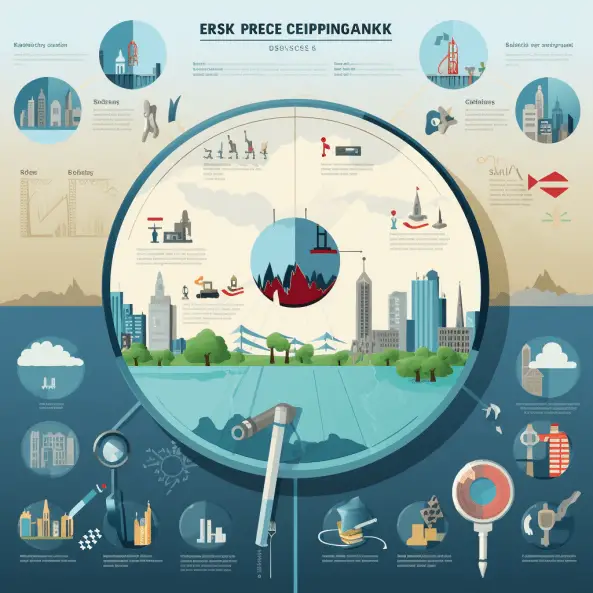Deciphering Key Risk Indicators (KRIs) in the financial realm involves identifying and analyzing metrics that can help identify potential risks to financial performance.
These metrics can be categorized into various risk indicators, such as credit risk indicators, market risk indicators, operational risk indicators, and more.
Credit risk indicators can include factors such as debt-to-income ratios, payment histories, loan-to-value ratios, collateral value assessments, and other credit-related factors.
Market risk indicators can include changes in interest rates, exchange rates, commodity prices, and other market conditions that can impact financial performance. Operational risk indicators can include employee turnover rates, customer complaints, system downtime, and other operational issues impacting financial performance.
Financial institutions can analyze these KRIs to better understand and mitigate potential risks.
It is important to note that KRIs should be tailored to the specific needs and goals of each institution, as different institutions may have different risk profiles and risk appetites. (source: OpsDog)
In the ever-dynamic landscape of the financial realm, an understanding of Key Risk Indicators (KRIs) stands paramount to maintaining economic resilience and ensuring adequate risk management.
KRIs, crucial harbingers of impending exposure to risk, pave the way for proactive management strategies that safeguard financial stability.
This article aims to delve deep into the essence of KRIs, elucidating their varieties and their pivotal role in decisive processes within businesses and financial institutions.
Moreover, the article offers insight into effective KRI measurement and monitoring approaches, underscoring the whole process’s significance through real-life examples and scenarios.
Understanding the Importance of Key Risk Indicators
Heading: The Quintessence of Key Risk Indicators in Risk Management
In the fast-paced and unforgiving business arena, mastering the art and science of risk management is not optional. It is crucial.
Discerning entrepreneurs comprehend that failure to consider threats can lead to catastrophic consequences. Enter Key Risk Indicators (KRIs), a tool, a method, and a philosophy that tends to be the propelling force for an effective risk management strategy.
But why, one might ask, are KRIs so indispensable? Let’s take a dive into the realm of KRIs and why they matter.
The dynamics of business have seen a seismic shift over the past decades. Industries are evolving, markets are fluctuating, and economies are transitioning.
In these testing times, KRIs serve as a lighthouse, guiding the ship of business through perilous seas. Kris allows companies to quantify risk levels, offering almost seismic-like signals of upcoming perils.
The utility of KRIs is not confined to anticipating dangers; they are instrumental in shaping a proactive, rather than a reactive, risk management approach.
Imagine being able to foresee the storm and alter your course rather than battening down the hatches when the storm is already upon you.
KRIs provide foresight, a crystal ball into future risk scenarios, enhancing the decision-making process monumentally.
Remember: every industry has unique risks, nuances, and idiosyncrasies. Customized, industry-specific KRIs possess the inherent power of translating complex risk data into actionable intelligence.
Useful insights can be drawn, safety nets developed, and contingency plans refined, all elevating a business’s risk management capacity to new heights.
What strengthens the case for KRIs is their crucial role in corporate governance. With stricter regulations, and demands for transparency and accountability, KRIs provide a concrete, incontrovertible method of reporting and managing risks.
Furthermore, they enable defining, measuring, and managing risk appetite, aligning risk management strategy with the company’s broader goals and visions.
Do KRIs eliminate risk? Certainly not. Any entrepreneur worth their salt will tell you that business risk is the bane and boon of any venture.
It is inherent, ubiquitous and, yes, even necessary. But KRIs can equip you with the tools to manage this risk, shape it, and wield it to your advantage.
In the grand theatre of business, KRIs have secured their spot as a headlining act. They have moved from being a mere auxiliary segment in risk management to the mainstay.
It is safe to say that traversing the competitive landscapes of business without deploying the potent weaponry of KRIs would be akin to navigating uncharted territories without a compass.
So, embrace KRIs not as a risk management addition but as a quintessential necessity. They are not just about surviving the storm but mastering the art of dancing in the rain.

Distinguishing different types of KRIs
Exploring the Different Varieties of Key Risk Indicators
One of the areas noteworthy for further analysis is the multiple varieties of Key Risk Indicators (KRIs). KRIs are robust tools with diverse categories that can be tailored to any organization, regardless of its size, industry, or geographical location.
They provide far-reaching insights into an organization’s financial performance and risk exposure. Let’s delve into the different varieties of KRIs and their implications for financial performance.
Credit KRIs:
In finance, credit KRIs keep an eye on the potential risk of client defaults on their financial obligations. These tools are particularly useful in banking and related industries to manage the risk correlated with loans and mortgages.
Tracking borrowers’ creditworthiness with credit KRIs provides early warning for potential risks that impact a bank’s financial performance.
Operational KRIs:
They measure the efficiency of internal procedures, systems, and policies by evaluating the frequency of procedural errors or the degree of deviation from laid-down standards.
Over time, these deviations can ripple into drastic financial implications. By addressing these issues proactively, businesses can increase operational proficiency, cut costs, and strengthen their bottom line.
Market KRIs:
In volatile markets, market KRIs act as barometers to navigate risks. They monitor and measure market-driven events, like fluctuations in exchange rates, commodity prices, or shifts in inflation rates, that can unfavourably impact a company’s financial performance.
Companies can make strategic plans to mitigate their impact by forecasting potential upheavals.
Strategic KRIs:
Change is the only certainty in business. Strategic KRIs are implemented to manage potential risks associated with changing business environments.
They offer analyses on impending launches of competitive products, technological changes, or shifts in consumer preferences. Keeping an optical zoom on such elements can save businesses from perilous financial aftermath.
Legal & Compliance KRIs:
In an era of increasing regulatory complexities, the significance of legal and compliance KRIs can’t be overemphasized.
They track and flag non-compliance areas that could trigger expensive litigation or hefty fines, thereby helping save a firm’s reputation and financial stand.
Cybersecurity KRIs:
In the digital age, the heightened threat level from cybersecurity breaches urges organizations to adopt KRIs that measure the risk of potential cyber-attacks, data thefts, and system vulnerabilities.
The catastrophic financial implications of data breaches and system disruptions make cybersecurity KRIs integral in the digital world.
The impressive panorama of KRI varieties demonstrates the comprehensive capabilities of these risk measurement tools. They touch every aspect of an organization’s operation, each crafted to provide unique insights that guide decision-making and defend financial performance.
Further, the dynamic nature of KRIs empowers them to morph and adapt as business dynamics evolve, providing indispensable value to their adopters.
While no silver bullet can entirely eliminate business risks, KRIs are dependable allies that support organizations to navigate risks proactively.
As business visionaries, we must continue to innovate and adapt these tools to the ever-changing business landscape for the enduring prosperity of our enterprises. Remember, a risk-versed organization is a successful one.

Application of KRIs in decision-making processes
An in-depth analysis of specific Key Risk Indicators (KRIs) reveals the potential they hold not only for risk management but also for strategic decision-making, especially in the realm of finance.
This discussion delves into the application of specific KRIs such as credit, operational, market, strategic, legal and compliance, and cybersecurity KRIs.
- Credit KRIs can be one of the greatest assets in the financial industry. These indicators present a predictive analysis of credit events that may significantly impact your financial position or performance. They allow executives to review and revise credit policies, fine-tune credit risk models, or even re-engineer processes to increase agility, contributing to enhanced strategic decision-making.
- Operational KRIs are another pivotal tool for the financial industry. They help identify and manage factors detrimental to service delivery, process management, or operating cost overruns. These insights enable a business to streamline services, optimize costs, and productively allocate resources in alignment with their strategic objectives.
In the volatile environment of the financial market, Market KRIs are essential. They help gauge changes in market trends, predict shifts in consumer behavior, and make forecasts about competitive movements.
These insights pave the way for prudent investments, precise marketing strategies and tactful business decisions, all while safeguarding the company’s market positioning.
Strategic KRIs assist in measuring an organization’s progress toward its long-term goals. In the financial segment, this includes monitoring aspects like investment viability, merger and acquisition prospects, business growth potential, and strategic alliance benefits.
Armed with this information, decision-makers can make timely and informed strategic decisions, ensuring maximum return on investment and sustained business growth.
Legal & Compliance KRIs are vital for all companies but they have significant implications in the financial industry, where non-compliance can result in hefty penalties and lawsuits.
Monitoring these KRIs ensures adherence to laws and regulations, reducing potential legal expenses. It further enhances corporate reputation, ensures stable operations, and ultimately drives business growth.
Last but certainly not least, Cybersecurity KRIs provide vital parameters regarding the robustness of cybersecurity practices and their alignment with business objectives.
In the era of digital finance, cybersecurity threats are real and can heavily impact operations and customer trust.
Continuously monitoring key risk indicators allows businesses to develop effective strategies, mitigate threats, and ensure secure transactions.
Key Risk Indicators, therefore, are more than just risk management tools; they are strategic arsenal for leading financial institutions.
They provide measurable evidence, delivering actionable insights to aid decision-making. Embracing and integrating these KRIs into the corporate culture can upgrade risk management from a reactive methodology to a proactive strategy, catalyzing business growth and sustainability.

Measuring and Monitoring Key Risk Indicators
Advancing from the understanding of Key Risk Indicators (KRIs), the focus now shifts to exploring proven methods for effective measurement and monitoring of these indicators.
Throughout this process, entrepreneurs demonstrate their keen business acumen, innovating solutions and improving financial risk management strategies.
Monitoring and measurement of KRIs start with clear documentation of business-related risks. They include credit risks, cybersecurity risks, market risks, legal and compliance risks, and strategic and operational risks. It’s essential to record and track these risks to provide a historical context to help anticipate and strategize for future scenarios.
Adopting a Risk Register provides an organized view of significant risks according to severity. It prioritizes risks based on a scoring or rating system whereby high scores signal a need for prompt or immediate attention.
Aside from tracking risk status and potential impacts, a Risk Register also entails response plans or risk mitigation strategies to manage and control the risks.
Quantitative Risk Assessment is another effective approach, leveraging numerical values and data to identify, assess, and communicate risks. This technique could utilize statistical models, Monte Carlo simulations, and decision tree analyses, among others, to estimate risk levels.
These robust methodologies introduce a proactive level of precision in monitoring KRIs.
Balanced Scorecards integrate financial performance metrics and KRIs to give a comprehensive view of a company’s health.
It provides a balanced use of not just lagging indicators but, more importantly, leading indicators like KRIs. Through tracking strategic progress concurrently with financial performance, this approach promotes holistic, forward-thinking risk management.
Stress Testing – a scenario-based approach that evaluates the potential effects of an adverse event or market condition on a business – is another robust tool for managing key financial risks.
It demonstrates the magnitude of potential loss and the buffer that the company needs to survive such scenarios.
Further leveraging technology, Dashboard Reporting can provide real-time KRI monitoring, offering top management quick access to relevant, digestible, and visual data on key risks.
The effective measurement and monitoring of KRIs represent a crucial business strategy. By tapping into these established practices, businesses can anticipate and manage risks better, ensuring longevity and success in this unpredictable business landscape.
Remember: where there’s risk, there’s reward. Be prepared to meet it head-on.

Conclusion
Throughout this exploration of Key Risk Indicators, we have observed their indispensability to financial stability, their vast applicability within decision-making scenarios, and their diversity.
Furthermore, we have delved into the intricate process of accurately measuring and monitoring these indicators, underlining the importance of established best practices and the adoption of innovative technologies for successful implementation.
When leveraged appropriately, KRIs are an invaluable tool in a professional’s arsenal, not only forewarning potential hazards but also assisting in carving out effective risk management strategies that can positively impact the overall financial performance of an institution or organization.

Chris Ekai is a Risk Management expert with over 10 years of experience in the field. He has a Master’s(MSc) degree in Risk Management from University of Portsmouth and is a CPA and Finance professional. He currently works as a Content Manager at Risk Publishing, writing about Enterprise Risk Management, Business Continuity Management and Project Management.


